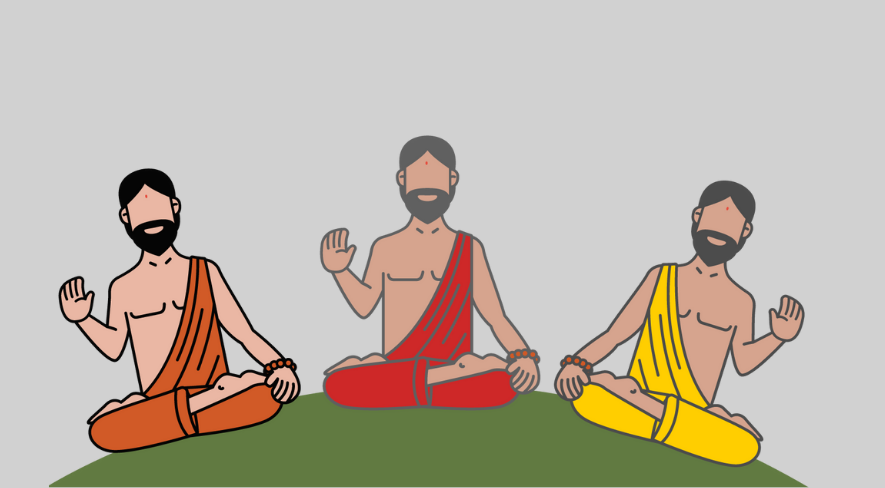Humans have travelled into space essentially to explore it and to gain knowledge of it so that we understand ourselves and our place in the universe much better. However, our relationship with space and celestial bodies is not just a modern discovery but goes back to ancient India. The sages of antiquity were one of the first ones to travel through space.
One might wonder, how was this possible when we didn’t even have cars, leave alone flying rockets? The rishis who walked the subcontinent of India were addressing existence and not religion. For Indian philosophy, the macrocosm – that is the spin of the planets, position of stars, the spatial geometry, movement of celestial bodies, light etc; are deeply intertwined with the macrocosm-that is our breathing rate, our biological and metabolic cycles, our inner geometry. Using meditative techniques and deeply introspective approaches to the inner world of a human being, along with what was observable in the night skies, the sages and Rishis were able to sense, intuit, and develop images that are parallel to the number of scientific views and modern discoveries in space.
For example: The Surya Siddhanta, which is the name of a Sanskrit treatise in Indian astronomy, dating back several thousand years, mentions the speed of light as 2202 yojanas in half a nimisha. 1 Yojana in modern metrics is 9 miles while one nimisha is 16/75th of a second. Do the maths and you’ll find that this matches the speed of light as we know today. Similarly, the texts calculate the earth’s diameter to be 8,000 miles (modern: 7,928 miles), diameter of moon as 2,400 miles (actual ~2,160) and the distance between moon and earth to be 258,000 miles (actual ~238,000). How is this possible for rishis many thousands of years ago to calculate the speed of light with such precision?
The Rishis of our subcontinent were realised souls to perceive the fact that the human system and the solar system are deeply interconnected. The outer space and the inner space, in other words, have a relationship, which our modern minds cannot fathom.
If you count the number of breaths you take per minute, it should average around 12-15. The average number of breaths a normal human being takes in one day is 21,600. Keep this number by your side. You must have learnt in your geography class that the earth is divided into longitudes and latitudes. The distance between two longitudes is measured in terms of 1 nautical mile. And if you account for the circumference of the earth, it equates to 21,600 nautical miles. That’s the total number of breaths an average human being takes in one day on this planet.
Similarly, the geometrical pattern which orders our inner system, orders the systems in outer space. The diameter of the Sun is 108 times the distance between the Sun and the Earth. While 108 times the diameter of the Moon gives us the distance between the Moon and the Earth. 108, as you may have heard, is a number which has had special significance in many of the traditional practises and rituals of Indian culture.
Such parallels not just blow our minds, but push us into thinking about the possibilities which we as individuals and as humans have within us. As Alan Watts, a philosopher of eastern wisdom, famously said, “You are the universe experiencing itself as a human”. It, thus, becomes both overwhelming and humbling to realise that we are not just a mere speck of dust floating in the debris of outer space, but that we truly hold the potential to count the stars out there, just by closing our eyes, one breath at a time!
For more such content from the Indian knowledge systems, check out the Indic Wisdom section The Plus magazine.

